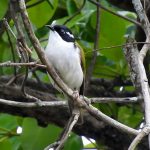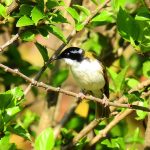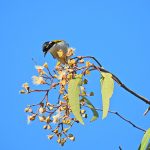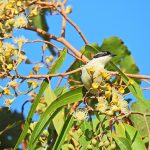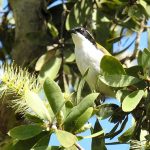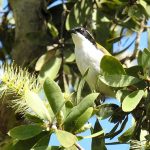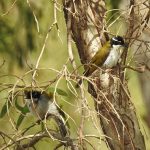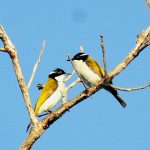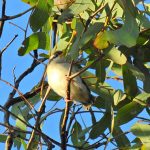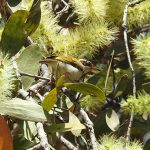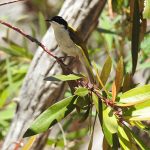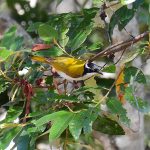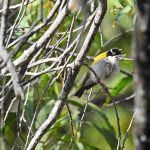WHITE-THROATED HONEYEATER
Melithreptus albogularis
The White-throated Honeyeater is a small honeyeater with distinct plumage. Its name is derived from the prominent white patch on its throat and upper breast, which contrasts with the dark olive-green or brownish-green feathers on the rest of its body. It has a black stripe through its eye, and its wings and tail are edged with white.
This honeyeater species is found in eastern and southeastern Australia, including parts of New South Wales, Victoria, and South Australia. It prefers a variety of habitats, including eucalypt forests, woodlands, heathlands, and coastal shrublands.
White-throated Honeyeaters are adaptable and can be found in a range of habitats, from dense forests to open woodlands and coastal areas. They are often seen in trees and shrubs, foraging for insects, nectar, and occasionally fruit.
Their diet consists of a mix of nectar from flowering plants, insects, and other small invertebrates. They use their specialized brush-tipped tongue to extract nectar from flowers. During the breeding season, they may increase their insect consumption to provide additional protein for their young.
White-throated Honeyeaters are known for their active and acrobatic foraging behavior. They can be seen darting from branch to branch in search of food, and they are often vocal, emitting a variety of calls and songs.
These honeyeaters typically build cup-shaped nests in trees or shrubs. The female lays two or three eggs, and both the male and female take turns incubating the eggs and feeding the chicks. Their nests are often well-hidden among foliage.
Like many bird species, they may face local threats such as habitat destruction and habitat degradation due to urbanization and land clearing.
White-throated Honeyeaters are valued for their role in pollinating plants while feeding on nectar, contributing to the ecological balance in their native habitats. They are also a favorite among birdwatchers due to their striking appearance and active behavior.

